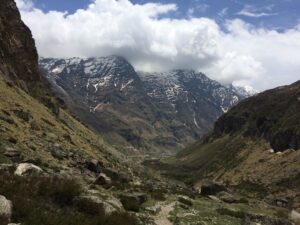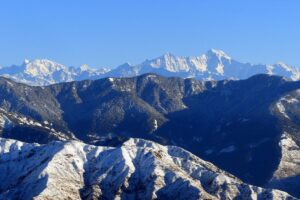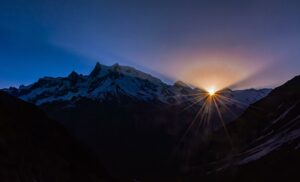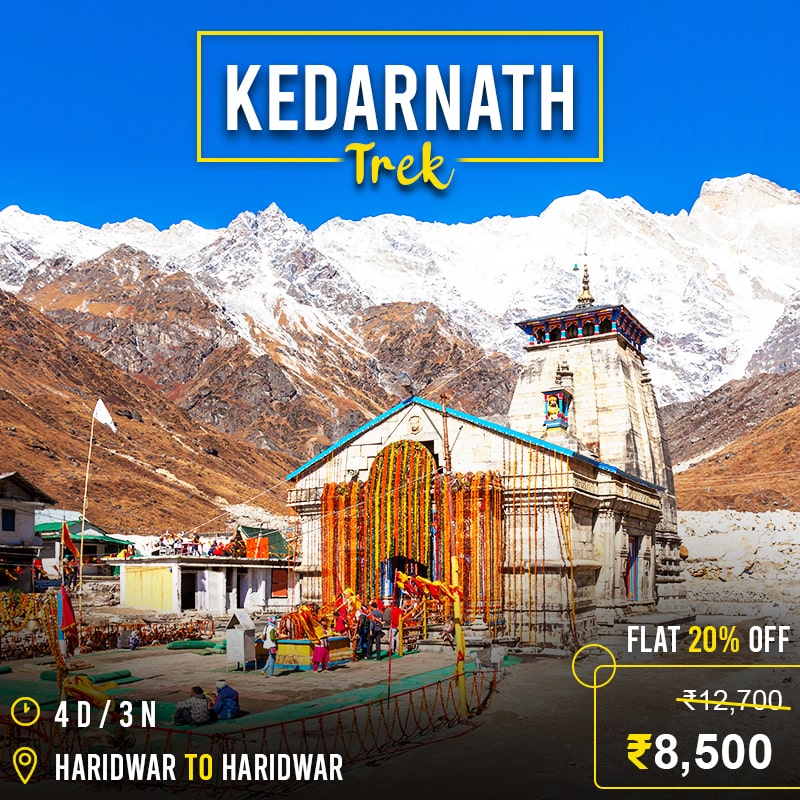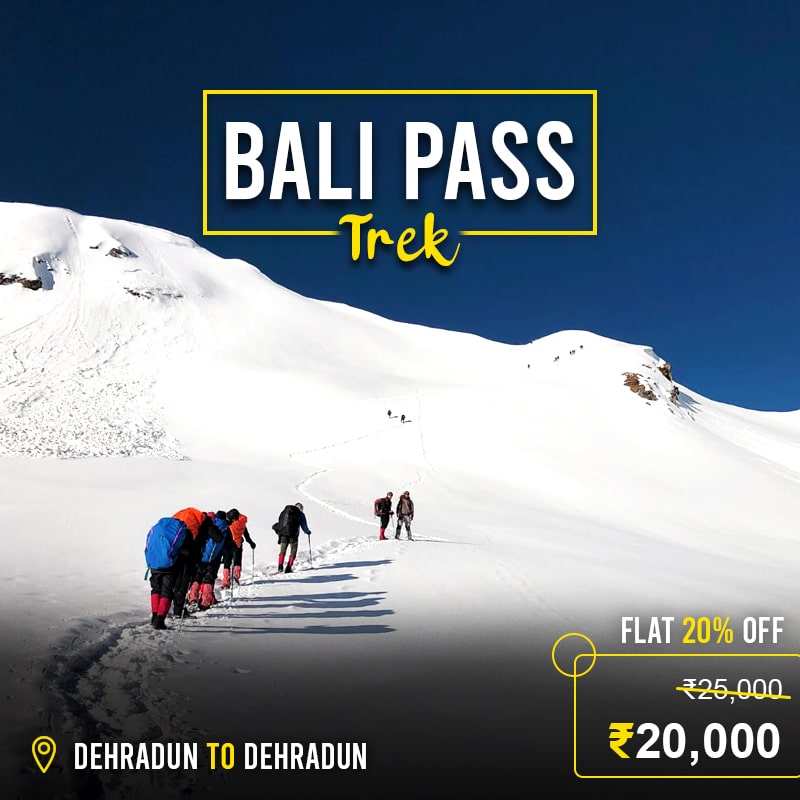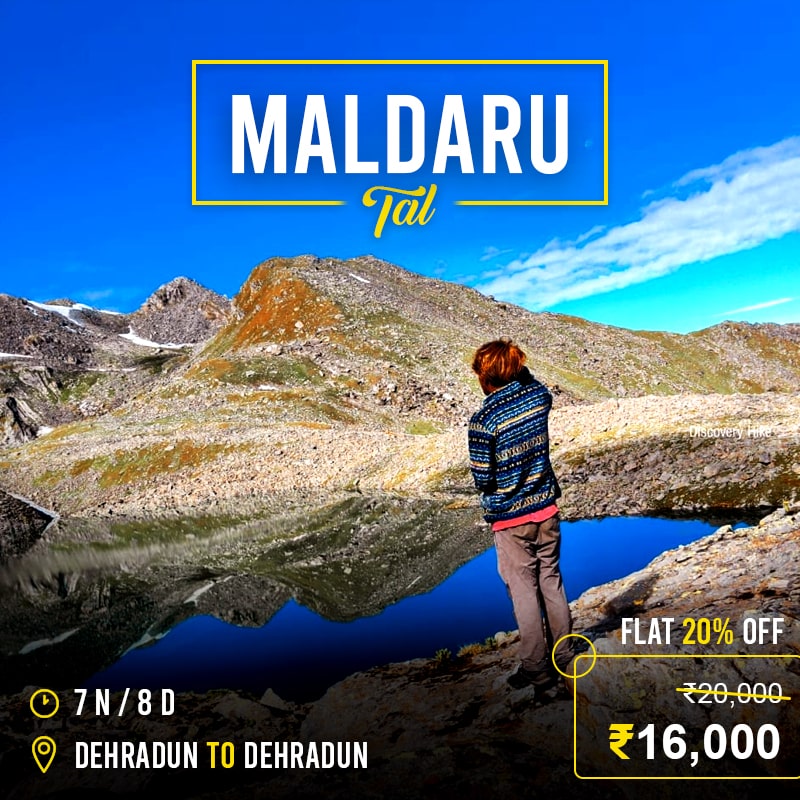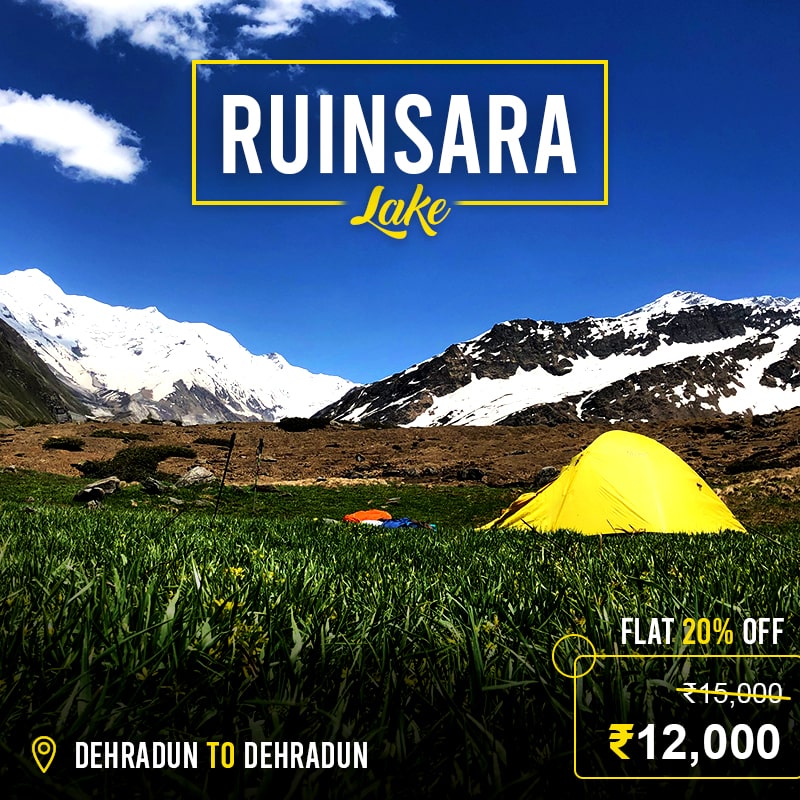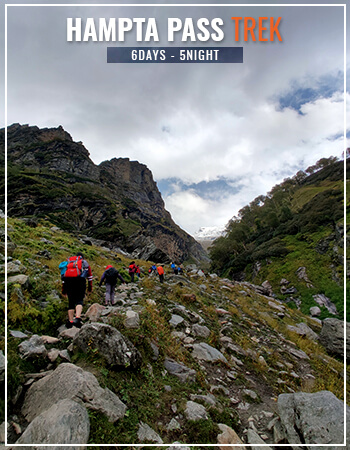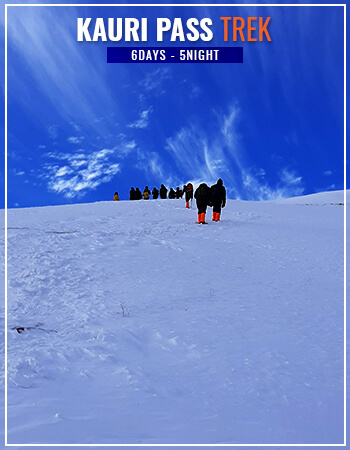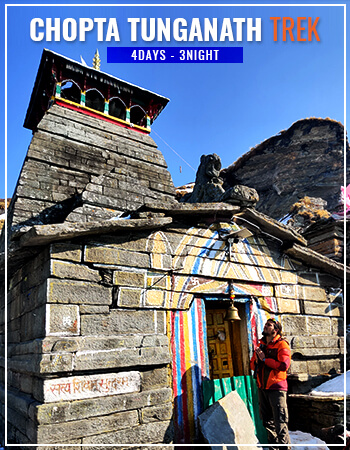SWARGAROHINI TREK EXPEDITION
13 Days - 12 Night
13 Days - 12 Night
15,100 ft.
Moderate
Joshimath
ABOUT
SWARGAROHINI TREK EXPEDITION
Swargarohini Trek is a four-peak mountain range in Uttarakhand’s Garhwal Himalayas. It’s called “Way to Heaven.” Chamoli district in Uttarakhand has an elevation of -17,987 ft. Pandavas, according to legend, took this path on their way to heaven. Just Yudhishthira (one of the Pandavas) and a puppy made it to the afterlife. Many of the other Pandavas perished en route. According to mythology, Swargarohini is the only way to reach Heaven while still in human form. The holiest lake of Satopanth is located within the Chaukhamba massifs. Since Lord Brahma, Vishnu, and Mahesh are said to have bathed in the waters of this lake, it is revered as sacred and sweet.
SHORT ITINERARY
-
DAY 1
From Haridwar to Joshimath
-
DAY 2
From Joshimath to Badrinath
-
DAY 3
Badrinath to Laxmivan
-
DAY 4
From Laxmivan to Chakratirth
-
DAY 5
Chakratirth towards Satopanth Tal Trek
-
DAY 6
Satopanth Tal to Chandrakund trekking
-
DAY 7
Chandrakund to Suryakund trek
-
DAY 8
Rest and Acclimatization Day
-
DAY 9
Suryakund to Swargarohini base camp Trekking
-
DAY 10
Suryakund towards Satopanth Tal Trek
-
DAY 11
Satopanth Tal to Laxmivan Trek
-
DAY 12
Laxmivan to Badrinath 4/5 Hours journey
-
DAY 13
Badrinath to Haridwar
DETAILed ITINERARY
Day 1: From Haridwar to Joshimath
The journey from Delhi to Joshimath takes 10/11 hours and passes through the holy rivers of the Alaknanda, Mandakini, and Ganga. At the confluence of the Bhagirathi and Alaknanda rivers, Devprayag is on the way. This is a lovely place.
The trip will not become monotonous and the landscape will change dramatically as you progress.
Arrive at Joshimath base camp, rest in a hotel, and spend the evening exploring the surrounding areas. Return to the hotel, have dinner, and rest comfortably.
Day 2: From Joshimath to Badrinath
After breakfast, drive to Badrinath, check into the hotel, and spend the day exploring Badrinath. In the evening, participate in the arti darshan. Dinner and overnight stay at the hotel.
Day 3: Badrinath to Laxmivan
After breakfast, drive to the last village, Mana, where the trek begins. After a short hike, you can see Vasudhara Falls, which is located on the opposite side of the Alaknanda River. Gradually ascend to the Somtoli meadows and cross a landslide-prone field, where shepherd huts can now be seen.
To get to the campsite, pass through the boulder field, which is densely forested with Bhojpatra trees. The view of the Alkapuri glacier on the opposite side adds to the beauty of the surroundings. Set the camps and relax for the night.
Day 4: From Laxmivan to Chakratirth
Today’s trek is difficult; head from Laxmi Van to Chakrateerth. The climb to “Sahastradhara,” which means “Thousand Waterfalls,” is a sheer ascent over scree and boulders. After climbing up the valley, you’ll be rewarded with views of the Chaukhamba hills, Balakun, and Neelkanth.
Cross a shallow stream ahead and continue walking on the levelled field. Now begin the steep climb to Chakrateerth campsite, which will be reached after a short trek. Set the camps and relax for the night.
Day 5: Chakratirth towards Satopanth Tal Trek
Start your hike early today because you’ll be passing through some difficult terrain. Ascend to the highest point on the mountain and hike down the glacier to the tranquil triangular “Satopanth Lake.” Views of the Chaukhamba peaks and Neelkanth Mahadev are spectacular.
The surroundings are lovely; spend some time exploring and relaxing there. Set the camps and relax for the night.
Day 6 : Satopanth Tal to Chandrakund trekking
Early in the morning, see the Chaukhamba peaks turn golden as the sun rises. After breakfast, begin the trek to Chandrakund, where you will see some stone rooms where saints live permanently.
The trail narrows as it approaches the crevassed Satopanth glacier on one side and rocky terrain on the other. When crossing this area, be extremely cautious because a single mistake can be extremely dangerous.
Reach Chandartal, a small lake where the water level rises and falls with the seasons. Lord Chandrama is said to have meditated here, and this Lake remains full of water on Purnima (full moon night).
Day 7 : Chandrakund to Suryakund trek
Early in the morning, drive to Suryakund and walk along the mountain’s side, passing through the moraine and boulder region. The entire Chaukhamba peaks and Kuber Parvat are visible from here. Set the camps and relax for the night.
Day 8: Rest and Acclimatization Day
Today, go on some short walks, explore the city, and relax. Here’s where you can spend the night.
Day 9 : Suryakund to Swargarohini base camp Trekking
Suryakund to Swargarohini Glacier is a steep ascent with crevasses along the way. Although the trek through the boulder and moraine region is difficult, the excellent and near views of high peaks are well worth it.
Reach the Swargarohini Glacier; the Swargarohini peaks “Char Singh” and “Way to Heaven” are seen above. There are three steps from here; there are assumed to be a total of seven, but due to the fog, none of them are apparent.
Set the camps and relax for the night.
Day 10: Suryakund towards Satopanth Tal Trek
After breakfast, return to this magical Lake along the same way. Overnight stay camp at Satopanth Tal.
Day 11: Satopanth Tal to Laxmivan Trek
Return to Laxmivan via Chakrateerth; the descent takes less time, but be cautious because some sections are difficult. Reach Laxmi Van and set the camps and relax for the night.
Day 12: Laxmivan to Badrinath 4/5 Hours journey
You can get to Mana village in three hours if you descend. The journey begins in Mana and ends in Badrinath, where arrangements will be made in a hotel. Heading to Badrinath ji darshan in the evening
Day 13: Badrinath to Haridwar
After breakfast, depart for Haridwar, stopping for lunch along the way, and arriving in the evening. 8 p.m.
subscribe Now
DETAILed ITINERARY
Day 1 : From Haridwar to Joshimath
The journey from Delhi to Joshimath takes 10/11 hours and passes through the holy rivers of the Alaknanda, Mandakini, and Ganga. At the confluence of the Bhagirathi and Alaknanda rivers, Devprayag is on the way. This is a lovely place. The trip will not become monotonous and the landscape will change dramatically as you progress.Arrive at Joshimath base camp, rest in a hotel, and spend the evening exploring the surrounding areas. Return to the hotel, have dinner, and rest comfortably.
Day 2: From Joshimath to Badrinath
After breakfast, drive to Badrinath, check into the hotel, and spend the day exploring Badrinath. In the evening, participate in the arti darshan. Dinner and overnight stay at the hotel.
Day 3: Badrinath to Laxmivan
After breakfast, drive to the last village, Mana, where the trek begins. After a short hike, you can see Vasudhara Falls, which is located on the opposite side of the Alaknanda River. Gradually ascend to the Somtoli meadows and cross a landslide-prone field, where shepherd huts can now be seen. To get to the campsite, pass through the boulder field, which is densely forested with Bhojpatra trees. The view of the Alkapuri glacier on the opposite side adds to the beauty of the surroundings. Set the camps and relax for the night.
Day 4: From Laxmivan to Chakratirth
Today's trek is difficult; head from Laxmi Van to Chakrateerth. The climb to "Sahastradhara," which means "Thousand Waterfalls," is a sheer ascent over scree and boulders. After climbing up the valley, you'll be rewarded with views of the Chaukhamba hills, Balakun, and Neelkanth.Cross a shallow stream ahead and continue walking on the levelled field. Now begin the steep climb to Chakrateerth campsite, which will be reached after a short trek. Set the camps and relax for the night.
Day 5: Chakratirth towards Satopanth Tal Trek
Start your hike early today because you'll be passing through some difficult terrain. Ascend to the highest point on the mountain and hike down the glacier to the tranquil triangular "Satopanth Lake." Views of the Chaukhamba peaks and Neelkanth Mahadev are spectacular. The surroundings are lovely; spend some time exploring and relaxing there. Set the camps and relax for the night.
Day 6 : Satopanth Tal to Chandrakund trekking
Early in the morning, see the Chaukhamba peaks turn golden as the sun rises. After breakfast, begin the trek to Chandrakund, where you will see some stone rooms where saints live permanently. The trail narrows as it approaches the crevassed Satopanth glacier on one side and rocky terrain on the other. When crossing this area, be extremely cautious because a single mistake can be extremely dangerous.Reach Chandartal, a small lake where the water level rises and falls with the seasons. Lord Chandrama is said to have meditated here, and this Lake remains full of water on Purnima (full moon night).
Day 7 : Chandrakund to Suryakund trek
Early in the morning, drive to Suryakund and walk along the mountain's side, passing through the moraine and boulder region. The entire Chaukhamba peaks and Kuber Parvat are visible from here. Set the camps and relax for the night.
Day 8: Rest and Acclimatization Day
Today, go on some short walks, explore the city, and relax. Here's where you can spend the night.
Day 9 : Suryakund to Swargarohini base camp Trekking
Suryakund to Swargarohini Glacier is a steep ascent with crevasses along the way. Although the trek through the boulder and moraine region is difficult, the excellent and near views of high peaks are well worth it.Reach the Swargarohini Glacier; the Swargarohini peaks "Char Singh" and "Way to Heaven" are seen above. There are three steps from here; there are assumed to be a total of seven, but due to the fog, none of them are apparent. Set the camps and relax for the night.
Day 10: Suryakund towards Satopanth Tal Trek
After breakfast, return to this magical Lake along the same way. Overnight stay camp at Satopanth Tal.
Day 11: Satopanth Tal to Laxmivan Trek
Return to Laxmivan via Chakrateerth; the descent takes less time, but be cautious because some sections are difficult. Reach Laxmi Van and set the camps and relax for the night.
Day 12: Laxmivan to Badrinath 4/5 Hours journey
You can get to Mana village in three hours if you descend. The journey begins in Mana and ends in Badrinath, where arrangements will be made in a hotel. Heading to Badrinath ji darshan in the evening
Day 13: Badrinath to Haridwar
After breakfast, depart for Haridwar, stopping for lunch along the way, and arriving in the evening. 8 p.m.
subscribe Now
Get Quote
DEPATURE DATE
Call- +91-8979108941 | +91-9458118063
Call- +91-8979108941 | +91-9458118063
Call- +91-8979108941 | +91-9458118063
Call- +91-8979108941 | +91-9458118063
Call- +91-8979108941 | +91-9458118063
COST INCLUSION
-
Pick and Drop Service from mentioned location
-
Fees for the guide and the chef
-
Camping facilities' rent
-
Entrance fees to the forest
-
To transport camping gear, a porter and mule are required. Please keep in mind that personal baggage can be borne by mules and/or porters for a fee
-
From the first day's dinner until the last day's brunch, both of the meals are vegetarian
-
Throughout the walk, you'll be staying in a tent or if possible, then in a guest house
COST EXCLUSION
-
No pickup and drop point from/for your hometown
-
Personal costs include things like tips, personal medications, and conference calls, etc
-
Apart from what is mentioned above, some transportation assistance during the trek
-
Porters/mules can carry personal luggage weighing up to 12 kg per bag per person for Rs 350 per day per bag
Frequently asked question
- Footwear: The trekking boots which must be waterproof and snow proof, normal boots, floaters, and woolen socks.
- Backpack: (50 ltr), Daypack (20-30 ltr), Duffel bag.
- Clothes: Jacket and trousers that are both waterproof and breathable. Jacket (synthetic or down feather fleece), synthetic insulated trousers, poncho, sweatshirt, inner thermal (upper & lower), fleece, t-shirts, cotton trekking pants, shorts
- Season wise Clothes:
- Hand and head protection includes liner gloves, bandannas, sun hats, woollen caps, and face masks, among other things.
- Accessories: Sunglasses/goggles, anti-glare lenses, water bottle, hydra bag, and headlamp with spare bulb and extra batteries are all recommended.
- Trekking Gears: Toolkit for an emergency. Sunscreen, a toiletry pack, water purification pills, Ziploc packs, ear plugs, first-aid kit, and the necessary medications are all recommended.
- Camping Equipment: Sleeping bags of lining (extreme -5 to +5 Celsius if you have one), trekking sticks, and so on.
- Warm top/light micro fleece pullover/full sleeve T shirt – 2/3
- Water resistant/repellent trekking pants with an inner lining for added warmth- 2 High-quality windproof/water-resistant outer shell (jacket) with a proper hood
- Thick Fleece / Full-sleeve Woollen Jumper, Down Jacket with at least 600 fill capacity Innerwear with a thermal component (upper and lower)
- Woolen hat, inner fleece gloves, and outer water-resistant gloves
- 4–5 pairs of thick woollen socks and standard socks, scarf/muffler (optional)
- Waterproof Trekking/Hiking shoes with a thick heel and high ankles that are comfortable to wear. Sneakers/sport shoes are ideal for camp.
- Poncho or raincoat. A small, light-weight towel
- A hydration pack and an insulated water bottle (optional)
- Sunglasses with UV cover and the potential to cut light, as well as a cap or floppy hat to shield the strong sun off your skin (important when traversing through snow)
- Trekking pole or sturdy walking stick Lip Balm, Sunscreen Lotion
- Flashlight / torch (with extra batteries) Medications, if any special prescription is needed Toiletries for personal use
- Carry a rain cover over your luggage • Day pack/small bag that you can carry on your back all day to keep your essentials in
- Keep a few poly bags or plastic containers in your bag to place your things in if you need to in case of heavy weather.
Personal Medical Kit (MANDATORY FOR ALL)
- 10 Diamox tablets (to prevent AMS)
- Nifedipine – 5 pills Dexamethasone – one strip
- 6 tablets of Crocin (fever)
- 4 tablets of avomine (motion sickness) 4 capsules of Avil 25mg (allergies)
- 4 tablets of Combiflam (Pain killer)
- 6 tablets each of Norflox TZ and Lomofen (diarrhea) 10 tablets of Digene (acidity)
- 10 Omez/Rantadine capsules (antacids) 3 to 5 metres of crepe bandage
- 1 tiny roll of gauze 10 strips of bandage 1 small roll of cotton 10 packets of ORS
- Moov spray Betadine or other antiseptic cream (aches, & sprains)
- If you're vulnerable to knee injuries, you should wear a knee cap. Powder with antifungal properties
- Cancellation: If a trek is cancelled at the last minute due to a natural disaster or unforeseeable circumstances (such as floods, earthquakes, landslides, attack, or bandh), Discoveryhike will have a trek voucher for the full number. The voucher can be used for the same or a different trek over the next year.
- In case you wish to cancel the trek, then please be aware of these things:
- Cancellations made within 30 days of the trek's launch date will include a complete refund.
- If you cancel within 30 and 20 days before the hike, you will get a 50% refund.
- There will be no refund if you cancel less than 20 days before the trek begins.
- Please keep in mind that if you get a refund, there will be a reduction of 4% (Cancellation charges) from the overall amount you pay. In addition, if you purchased trek insurance, you would not get a refund.
- Discoveryhike assumes no responsibility for any malfunction or injury to your clothes, supplies, or other belongings while on the trek. The trek fee covers all expenses associated with the trek from start to finish.

